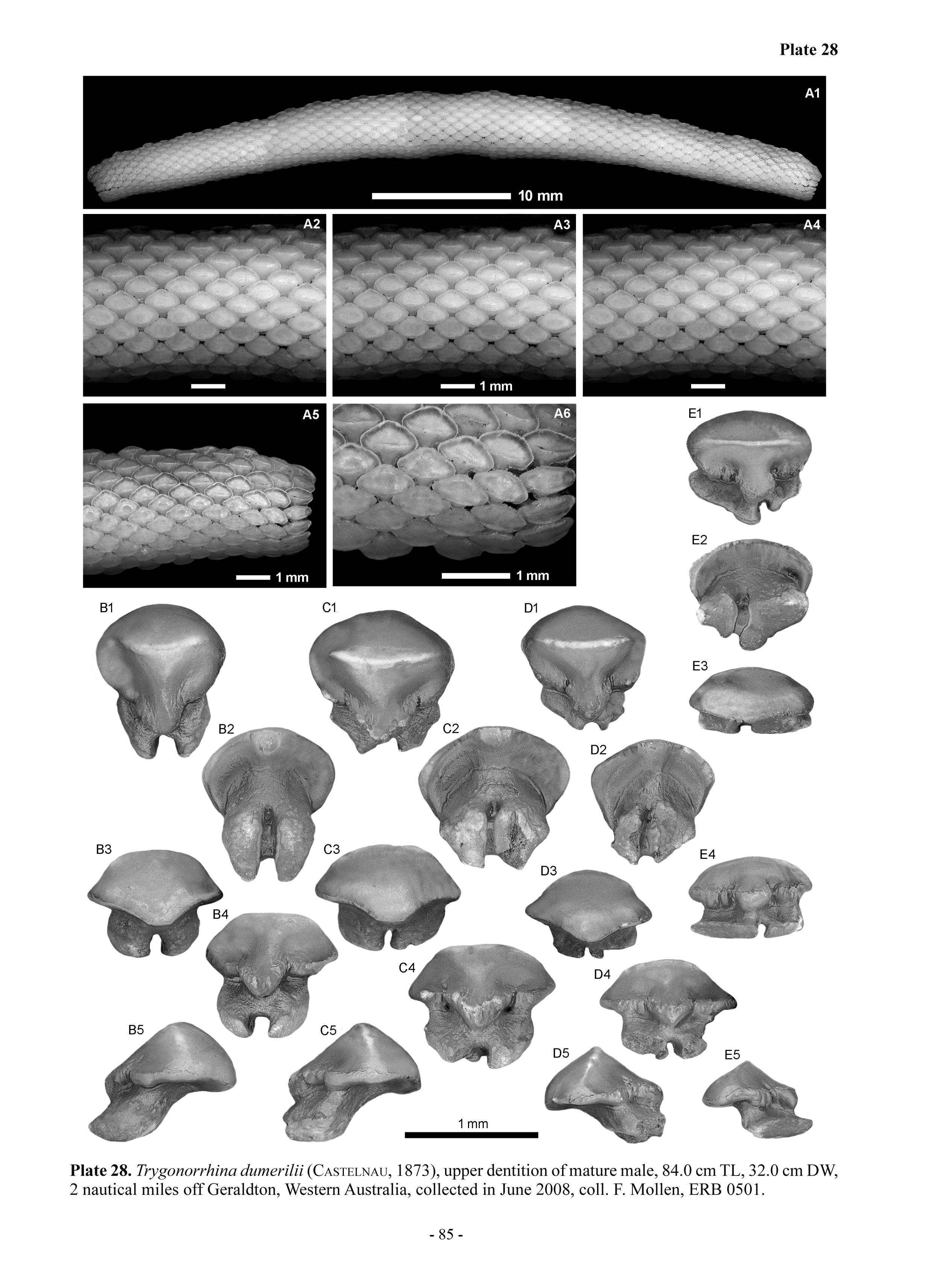
|

|
PALAEONTOS 34Price: members: 45,00 € ; non-members: 50,00 € postage is extra REINECKE T., MOLLEN F.H., SEITZ J.C., MOTOMURA H., HOVESTADT D. & HOEDEMAKERS K. 2023. Iconography of jaws and representative teeth of extant rhinopristiform and dasyatoid batoids (Chondrichthyes, Elasmobranchii) for comparison with fossil batoid material. Palaeontos 34: 3-158 (incl. 101 plates). ISSN: 1377-4654Abstract: Detailed illustrations and descriptions of batoid dental morphology and structure can provide important clues for the identification, taxonomy, and phylogeny of fossil batoids whose fossil remains are often limited to isolated teeth. Unfortunately, there is a paucity of such detailed information in the literature. We identified numerous extant species and genera of the order Rhinopristiformes and the superfamily Dasyatoidea whose teeth or dentitions have previously not been described or illustrated sufficiently to describe their characteristic features. To partly fill this gap, this study illustrates the dentitions and extracted teeth of 11 extant species in the families Pristidae, Rhinidae, Rhinobatidae, Glaucostegidae, Trygonorrhinidae (Rhinopristiformes) and Zanobatidae (?Myliobatiformes, ex Rhinobatiformes), and 25 species in the families Dasyatidae, Urotrygonidae, and Urolophidae (Dasyatoidea). These illustrations partly complement earlier studies by HERMAN et al. (1997, 1998, 1999, 2000) and CAPPETTA (2012). In instances where two or more species of a given genus are studied, we are more likely to recognize uniform dental characteristics, as opposed to merely recognizing the often stronger differences between genera or families. Two types of monognathic dental patterns are observed: unidirectional-gradient- and undulate-gradient-heterodont. Whereas the former type is characteristic of most genera in the Rhinopristiformes (Anoxypristis and Pristis [Pristidae], Acroteriobatus and Rhinobatos [Rhinobatidae], Glaucostegus [Glaucostegidae], Trygonorrhina and Zapteryx [Trygonorrhinidae]) and some dasyatoid genera, i.e., Pteroplatytrygon and Megatrygon (Dasyatidae), Plesiobatis (Plesiobatidae), Trygonoptera and Urolophus (Urolophidae), and Urobatis and Urotrygon (Urotrygonidae), the second type is observed in the rhinopristiform genera Aptychotrema (Trygonorrhinidae), Pseudobatos (upper jaw, Rhinobatidae), Rhina, Rhynchorhina, and Rhynchobatus, and in most genera of the Dasyatoidea. Upper/lower jaws of most rhinopristiform taxa are dignathic-homodont (or nearly so). The exceptions are Aptychotrema, Pseudobatos, and in Rhinidae, where differing patterns exist in upper/lower jaws. Also, differences in tooth widths exist in upper and respective lower jaws of Zanobatus. Gynandric (sexual) heterodonty appears absent or weak in all rhinopristiform genera of Pristidae, Rhinidae, Rhinobatidae, and Glaucostegidae. However, gynandric heterodonty is distinct in Trygonorrhinidae (except Trygonorrhina), and Zanobatidae, at least in terms of the species studied in the present work. Gynandric heterodonty is most prominent in several dasyatoid genera and species of Urotrygonidae, Urolophidae, Plesiobatidae, and the subfamily Dasyatinae. It is less developed in the Neotrygoninae and probably in the Hexatrygonidae and some genera of the subfamily Urogymninae. Gynandric heterodonty is probably absent in the hypolophin genera Pastinachus and Makararaja. Generally, gynandric heterodonty appears to constitute rather similar specificities in different species of a particular genus. The crown ornamentation, if present, commonly varies only moderately between species within dasyatoid (except Dasyatis) and rhinopristiform genera, although collectively it comprises a wide range of features. Two examples of dasyatid teeth in rich fossil faunas, collected from the Chattian of northern Germany and the Burdigalian of southern France, are presented and discussed to show how, in comparison with recent forms, allocation of the described species to different genera can be made. The taxon Dasyatis probsti CAPPETTA, 1970 is re-evaluated and assigned to the genus Bathytoshia WHITLEY, 1933 as Bathytoshia probsti (CAPPETTA, 1970) comb. nov. |
|
ORDER INFORMATION:please contact us at: palaeontos@gmail.com |
|